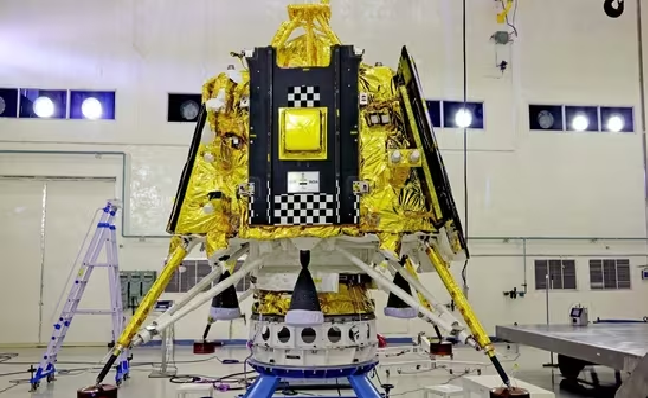SC halts mosque survey orders, restricts lower courts in pending cases
.gif)
.gif)
The ISRO has announced that Chandrayaan-3 will launch on July 13, with a potential extension until July 19
The mission aims to achieve a soft landing on the Moon, making India the fourth country to do so, Chandrayaan-3 will be integrated with GSLV Mk-III and utilize the Orbiter from Chandrayaan-2
The mission's objective is to explore the far side of the Moon and gather scientific data during its expected 14-day duration

The Indian Space Research Organisation (ISRO) has revealed that the eagerly awaited Chandrayaan-3 mission is set to launch on July 13. The ISRO chief, S Somnath, confirmed the launch date, adding that it could extend up to July 19 if necessary.
The mission aims to achieve a soft landing on the Moon, a feat accomplished so far only by India, Russia, and China. With the Chandrayaan-3 mission, India strives to become the fourth country to successfully land a spacecraft on the lunar surface. The ISRO team has meticulously integrated Chandrayaan-3 with the Geosynchronous Satellite Launch Vehicle Mk-III (GSLV Mk-III), India's heaviest launch vehicle.
This collaboration will propel the spacecraft toward its trajectory to the Moon. The third edition of the Chandrayaan series has a primary objective of softly landing on the Moon's surface.The optimal launch window for the mission, according to S Somnath, is from July 12 to July 19. During this period, the orbital dynamics will allow for minimal fuel consumption and greater efficiency in the journey to the Moon.
To coordinate with the new mission, ISRO will utilize the Orbiter launched with Chandrayaan-2 a few years ago. This Orbiter is currently orbiting the Moon, conducting scientific experiments and mapping the lunar surface.
The lander-rover combination, crucial components of the Chandrayaan-3 mission, have been securely packed within the spacecraft's propulsion module. The propulsion module will transport them to the lunar orbit before commencing the challenging descent to the Moon's surface.
Chandrayaan-3 follows in the footsteps of the Chandrayaan-2 mission, which unfortunately crash-landed on the Moon's surface four years ago. With a renewed focus, Chandrayaan-3 aims to explore the far side of the Moon and achieve a soft landing.
The duration of the mission is expected to be one lunar night, equivalent to 14 Earth days. During this time, Chandrayaan-3 will conduct various scientific experiments and gather valuable data about the Moon's geology and composition.